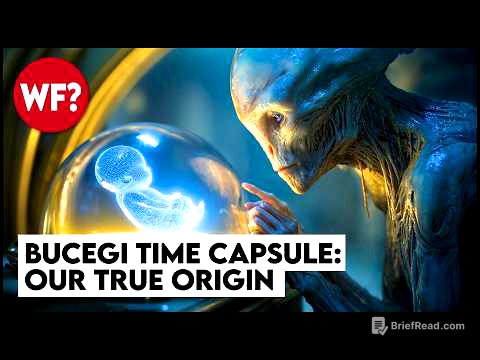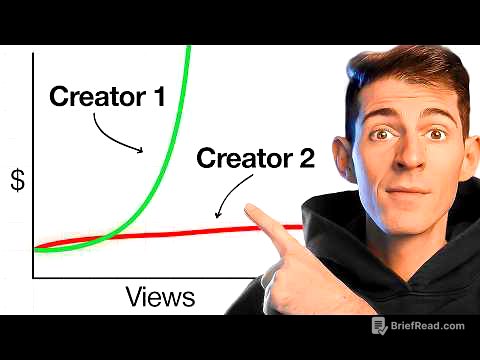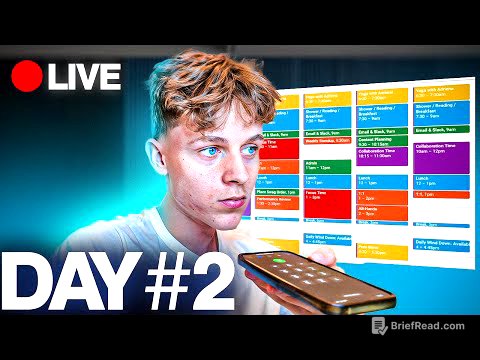TLDR;
This video features a dialectical behavior therapy (DBT) session where Dr. Judy Ho helps a patient, Kyle, manage his depressive symptoms, particularly feelings of hopelessness and helplessness. The session focuses on distress tolerance techniques, such as self-soothing with the five senses, and the concept of "wise mind," which involves integrating emotional and logical thinking to cope with difficult moments. The goal is to equip Kyle with practical tools to prevent and manage depressive episodes by accepting his experiences and finding ways to improve his immediate state of mind.
- Focus on managing hopelessness and helplessness.
- Developing a prevention plan for depressive episodes.
- Using distress tolerance techniques like self-soothing.
- Engaging the "wise mind" by integrating emotional and logical thinking.
Introduction [0:04]
Dr. Judy Ho begins a dialectical behavior therapy (DBT) session with Kyle, who has a history of depression since childhood and is currently managing his symptoms with medication. Kyle expresses that while he's doing well, he still experiences feelings of hopelessness and inadequacy, particularly concerning his impact at work. He also mentions past severe depressive episodes that left him unable to function. The session aims to address these long-standing feelings and develop a prevention plan for future episodes.
Identifying Core Issues [4:00]
Kyle describes his feelings of hopelessness and helplessness as hardwired in his brain, comparing it to his hereditary Crohn's disease. He feels he constantly has to fight against his brain's default setting. Dr. Ho identifies two main goals for the session: managing Kyle's long-standing feelings of hopelessness and helplessness, and developing a prevention plan to reduce his vulnerability to future depressive episodes.
Exploring Coping Mechanisms [5:49]
Dr. Ho asks Kyle about his past attempts to combat these feelings. Kyle mentions overeating, exercising, sleeping, and even subconscious reliance on alcohol. Successful strategies have included medication and staying busy. However, Kyle feels that being busy only distracts him without addressing the root cause. Dr. Ho explains that hopelessness often stems from a human need to control one's life and the fear of unforeseen challenges.
Distress Tolerance: Self-Soothing Techniques [9:14]
Dr. Ho introduces the concept of distress tolerance, focusing on managing stressful moments to reach a baseline state where deeper issues can be addressed. She suggests self-soothing using the five senses in under a minute. Kyle identifies looking at images of his dog or real estate magazines for visual calm, a clean and organized house for olfactory comfort, and Pellegrino water for taste. Dr. Ho explains that even using one or two senses can shift one's experience enough to disengage the fight-or-flight response.
Acceptance vs. Prevention [13:17]
Kyle expresses skepticism about preventing major depressive episodes, feeling they are inevitable despite his efforts. Dr. Ho emphasizes that DBT involves accepting the current experience without necessarily liking it. She encourages Kyle to acknowledge his past survival of these episodes, recognizing that a part of him remains intact. Dr. Ho uses the analogy of a play with actors, a narrator, and an audience to illustrate different levels of detachment and the self that remains constant through all experiences.
Wise Mind and Deeper Strategies [18:36]
Dr. Ho explains that in moments of hopelessness, it's important to calm the mind before engaging deeper strategies. She introduces the concept of "wise mind," integrating emotional and logical sides to transcend immediate reactions. She illustrates this by asking Kyle what his wise mind would do when his emotional mind wants to retreat to bed and his logical mind criticizes him. Kyle admits he usually ignores his emotions and relies on logic, which often leads to him getting into bed anyway.
Practical Application and Homework [22:03]
Dr. Ho provides a pleasant activities list with 250 options, tasking Kyle to pick one activity daily as prevention and to identify those that work best for him. She suggests that even small activities can shift the experience. She emphasizes that wise mind involves avoiding black-and-white thinking and finding a middle ground, such as going to bed for 30 minutes while engaging in a pleasant activity. Kyle's homework is to experiment with the activities and build an emergency toolkit for when he feels hopeless.
Conclusion [24:59]
Kyle expresses that his biggest takeaway is the need to integrate his emotional and logical sides, rather than fighting his emotional side and negotiating with his logical side.









